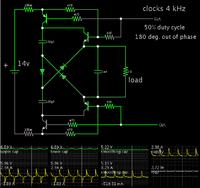asking
Full Member level 5

- Joined
- Sep 21, 2010
- Messages
- 279
- Helped
- 6
- Reputation
- 12
- Reaction score
- 6
- Trophy points
- 1,298
- Activity points
- 3,377
Hello,
I have made a PWM Circuit using the STP120N4F6 & PIC16F628A, I was thinking if using PWM and then filtering the output with Large 4700uF 25Volt Capacitor i can make a Buck Converter, then why Inductor is required ? If i m getting Average Value Directly....?
Please explain me, i m new to Buck Converter and i need to make one. So i need help.
Thanks:-o
I have made a PWM Circuit using the STP120N4F6 & PIC16F628A, I was thinking if using PWM and then filtering the output with Large 4700uF 25Volt Capacitor i can make a Buck Converter, then why Inductor is required ? If i m getting Average Value Directly....?
Please explain me, i m new to Buck Converter and i need to make one. So i need help.
Thanks:-o



